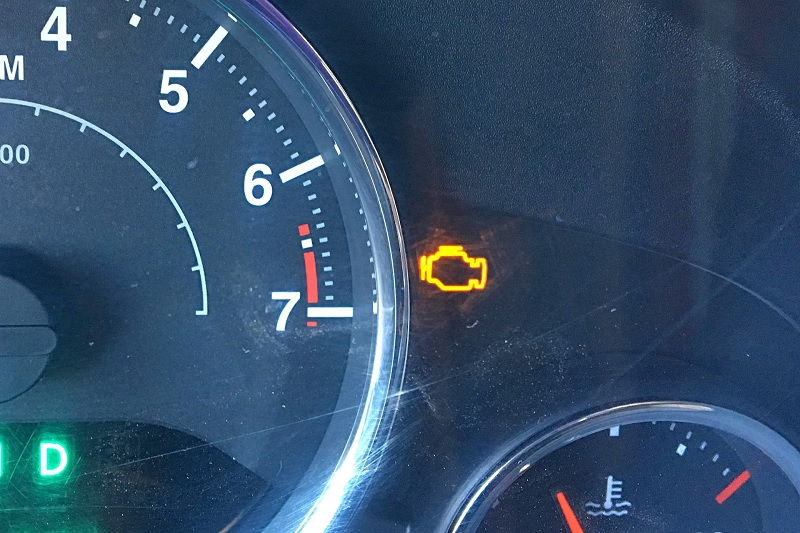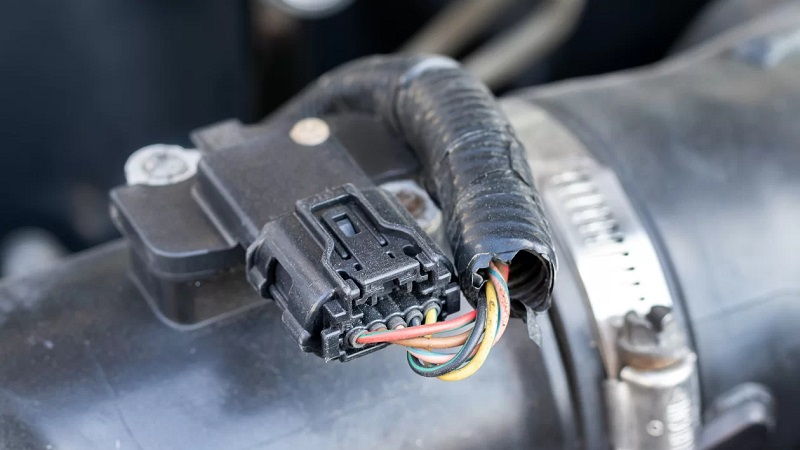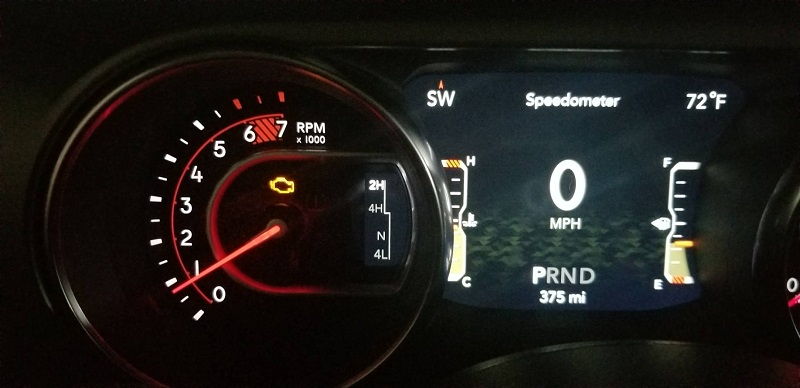This post contains affiliate links. This means I will make a commission at no extra cost to you should you click through and make a purchase [ “As an Amazon Associate, I earn from qualifying purchases.” ]. Read the full disclosure here.
Jeep Engine Light GuideMechanic.Com When the dreaded engine light comes on in your Jeep, it can be a cause for concern and confusion. Understanding the reasons behind this warning can help you address the issue promptly and prevent further damage to your vehicle.
In this comprehensive guide, we will delve into the various factors that can trigger the Jeep engine light, providing you with the knowledge you need to diagnose and resolve the problem effectively.
In this article, we will explore the most common causes of the engine light illuminating in Jeeps. We will provide a detailed explanation for each issue and offer possible solutions to help you rectify the problem. By understanding these potential culprits, you will be better equipped to troubleshoot your Jeep and save on unnecessary repairs.
Jeep Engine Light
Loose or Faulty Gas Cap

A loose or faulty gas cap is one of the most frequent reasons for the engine light to come on. When the gas cap is not properly tightened, it can cause a leak in the fuel system.
This triggers the engine light as the vehicle’s onboard diagnostic system detects the issue. Additionally, a faulty gas cap that fails to create a proper seal can also lead to fuel evaporation, negatively impacting your vehicle’s fuel efficiency.
Solution:
If you suspect a loose gas cap, start by ensuring it is tightly secured. If the cap is damaged or worn out, it is advisable to replace it with a new one. Ensure that the replacement gas cap is compatible with your Jeep’s make and model.
See Also: Jeep Patriot Catalytic Converter
After replacing the gas cap, the engine light should turn off on its own after a few drive cycles. If the light persists, there may be another issue triggering the warning.
Jeep Engine Light
Oxygen Sensor Failure

The oxygen sensor plays a crucial role in monitoring the oxygen levels in the exhaust gases. It provides feedback to the vehicle’s engine control module (ECM) to adjust the air-to-fuel ratio for optimal combustion.
When the oxygen sensor fails, it can lead to an incorrect fuel mixture, causing poor engine performance, reduced fuel efficiency, and increased emissions.
Symptoms:
Some common symptoms of a failing oxygen sensor include decreased fuel efficiency, rough idling, engine misfires, and an increase in tailpipe emissions. Additionally, the engine light may illuminate to indicate a problem with the oxygen sensor.
Solution:
To diagnose an oxygen sensor failure, a diagnostic scan tool can be used to retrieve trouble codes from the vehicle’s ECM. These codes will indicate which specific oxygen sensor is malfunctioning.
Once identified, the faulty sensor should be replaced with a new one that matches your Jeep’s specifications. It is recommended to replace all oxygen sensors simultaneously if they are of similar age to prevent future failures.
Jeep Engine Light
Malfunctioning Mass Airflow Sensor

The mass airflow (MAF) sensor measures the amount of air entering the engine to determine the appropriate amount of fuel to inject.
When the MAF sensor malfunctions, it can cause an incorrect air-to-fuel ratio, leading to engine performance issues, decreased fuel efficiency, and increased emissions.
Symptoms:
Signs of a malfunctioning MAF sensor include rough idling, engine hesitation or stalling, reduced power, and an illuminated engine light. Additionally, you may notice poor acceleration and a decrease in fuel efficiency.
Solution:
To diagnose a malfunctioning MAF sensor, you can use a diagnostic scan tool to retrieve trouble codes from the ECM. These codes will indicate if the MAF sensor is the culprit.
Cleaning the MAF sensor with a specialized cleaner can sometimes resolve the issue. However, if cleaning does not improve performance, it may be necessary to replace the sensor with a new one that matches your Jeep’s specifications.
Jeep Engine Light
Faulty Catalytic Converter
Check out this Plasticolor 001668R01 Jeep Weatherpro 4 Piece Floor Mats Set, Floor Mats, One Size, Black

The catalytic converter is responsible for reducing harmful emissions by converting toxic gases into less harmful substances. When the catalytic converter fails, it can lead to increased emissions, reduced engine performance, and an illuminated engine light.
Symptoms:
Signs of a failing catalytic converter include decreased engine performance, reduced acceleration, a rotten egg smell from the exhaust, and an illuminated engine light. Additionally, a failing catalytic converter may cause your Jeep to fail emissions tests.
Solution:
If you suspect a faulty catalytic converter, it is recommended to have a professional mechanic diagnose the issue. They will use diagnostic tools to measure the converter’s efficiency and determine if it needs to be replaced.
If replacement is necessary, ensure that the new catalytic converter meets your Jeep’s specifications to ensure optimal performance and emissions compliance.
Jeep Engine Light
Ignition System Issues

The ignition system plays a vital role in starting the engine and maintaining its smooth operation. Issues with components such as spark plugs, ignition coils, and ignition control modules can lead to engine misfires, decreased performance, and an illuminated engine light.
Symptoms:
Signs of ignition system issues include engine misfires, rough idling, difficulty starting the engine, decreased fuel efficiency, and an illuminated engine light. You may also experience a loss of power and poor acceleration.
Solution:
If you suspect ignition system issues, it is recommended to start by inspecting and replacing worn-out spark plugs. Ensure the replacement spark plugs match your Jeep’s specifications. If the issue persists, further inspection of ignition coils and control modules may be necessary. Consult a professional mechanic to diagnose and resolve the problem.
Jeep Engine Light
EGR Valve Dysfunction
The Exhaust Gas Recirculation (EGR) valve helps reduce emissions by redirecting a portion of the exhaust gases back into the combustion chamber. When the EGR valve malfunctions, it can lead to increased emissions, decreased fuel efficiency, and an illuminated engine light.
Symptoms:
Common symptoms of a faulty EGR valve include rough idling, engine hesitation, reduced power, increased fuel consumption, and an illuminated engine light.
Solution:
See Also: Jeep Grand Cherokee Starter
To diagnose an EGR valve dysfunction, a professional mechanic may use diagnostic tools to retrieve trouble codes from the ECM. These codes will indicate if the EGR valve is the cause of the problem.
Cleaning the EGR valve and its passages can sometimes resolve the issue. If cleaning does not improve performance, it may be necessary to replace the EGR valve with a new one that matches your Jeep’s specifications.
Jeep Engine Light
Problems with the Mass Airflow Sensor

Issues with the mass airflow (MAF) sensor can lead to incorrect air-to-fuel ratios, affecting engine performance and triggering the engine light. Dust, dirt, or debris accumulation on the sensor can hinder its functionality.
Symptoms:
Signs of a malfunctioning MAF sensor include rough idling, engine hesitation or stalling, reduced power, and an illuminated engine light. Additionally, you may notice poor acceleration and a decrease in fuel efficiency.
Solution:
If you suspect a problem with the MAF sensor, start by inspecting it for any visible dirt or debris. Cleaning the MAF sensor with a specialized cleaner can often improve its performance.
However, if cleaning does not resolve the issue, it may be necessary to replace the sensor with a new one that matches your Jeep’s specifications.
Jeep Engine Light
Issues with the Evaporative Emission System
The evaporative emission system is responsible for controlling fuel vapors and preventing them from entering the atmosphere. Issues with components such as the charcoal canister, purge valve, or fuel cap can lead to fuel vapor leaks and trigger the engine light.
Symptoms:
Signs of problems with the evaporative emission system include an illuminated engine light, a strong fuel odor, decreased fuel efficiency, and difficulties starting the engine.
Solution:
To diagnose issues with the evaporative emission system, a professional mechanic may use diagnostic tools to retrieve trouble codes from the ECM.
These codes will indicate which specific component is malfunctioning. Repair or replacement of the faulty component, such as the charcoal canister or purge valve, may be necessary to resolve the issue.
Jeep Engine Light
Faulty Spark Plugs or Ignition Coils
Worn-out spark plugs or faulty ignition coils can lead to engine misfires, decreased performance, and an illuminated engine light. These components are crucial for the ignition process, providing the necessary spark to ignite the air-fuel mixture.
Symptoms:
Signs of faulty spark plugs or ignition coils include engine misfires, rough idling, decreased power, difficulties starting the engine, and an illuminated engine light.
Solution:
If you suspect spark plug or ignition coil issues, start by inspecting and replacing worn-out spark plugs. Ensure the replacement spark plugs match your Jeep’s specifications.
If the issue persists, further inspection of ignition coils may be necessary. Consult a professional mechanic to diagnose and resolve the problem.
Jeep Engine Light
Problems with the Fuel System
The fuel system is responsible for delivering fuel to the engine. Issues such as a clogged fuel filter, fuel pump failure, or problems with the fuel injectors can lead to engine performance issues and trigger the engine light.
Symptoms:
Signs of fuel system problems include decreased engine performance, rough idling, engine hesitation, difficulties starting the engine, and an illuminated engine light.
Solution:
If you suspect a problem with the fuel system, start by inspecting the fuel filter. A clogged fuel filter can restrict fuel flow and affect engine performance. If necessary, replace the fuel filter with a new one that matches your Jeep’s specifications.
If the issue persists, further inspection of the fuel pump or fuel injectors may be necessary. Consult a professional mechanic to diagnose and resolve the problem.
In conclusion, understanding the reasons behind the engine light illuminating in your Jeep is essential for proper maintenance and timely repairs.
By familiarizing yourself with the common causes discussed in this article, you can confidently diagnose and resolve issues, saving both time and money. Remember, regular vehicle check-ups and addressing problems promptly are key to keeping your Jeep running smoothly for years to come.
Regular maintenance and adherence to recommended service intervals will help prevent many issues that can trigger the engine light.
Additionally, keeping your Jeep’s engine clean and using high-quality fuel can contribute to optimal performance and reduce the likelihood of engine light issues.
It’s also important to note that while some engine light issues can be resolved with DIY methods, others may require the expertise of a professional mechanic.
If you are unsure or uncomfortable with diagnosing or fixing the problem yourself, it is always recommended to seek professional assistance.
Lastly, it’s worth mentioning that the engine light serves as an important indicator of potential problems, and ignoring it or attempting to cover it up without addressing the underlying issue can lead to more significant and costly damage to your Jeep’s engine.
Therefore, it is crucial to take the engine light seriously and address it promptly to ensure the longevity and optimal performance of your vehicle.
See Also: P0441 Jeep Grand Cherokee
Related video of Understanding the Jeep Engine Light: Common Causes and Solutions
- Custom Lifted Diesel Trucks for Sale - December 20, 2025
- New Lifted Diesel Trucks for Sale - December 19, 2025
- Old Lifted Diesel Trucks for Sale - December 18, 2025
